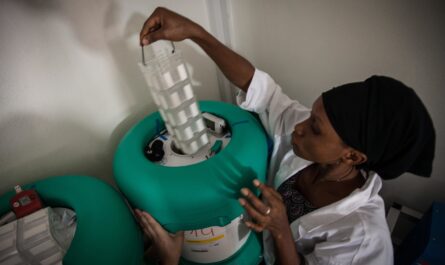Long bone fractures are among the most common orthopaedic injuries and intramedullary nailing has emerged as one of the preferred techniques for treating fractures of the femur, tibia and humerus. In this article, we will discuss the basic principles, technique and advantages of intramedullary nailing for long bone fractures.
What is Intramedullary Nailing?
Intramedullary nailing, also known as IM nailing, involves the insertion of a sturdy metal rod known as an intramedullary nail into the medullary cavity or central canal of the fractured bone. The goal of IM nailing is to stabilize the fracture internally by placing the nail across the fracture site. Some key facts about intramedullary nailing:
– The intramedullary nail acts as an internal splint or scaffold for the fractured bone fragments to heal.
– The procedure involves inserting the nail through a small incision at the end of the bone after reaming or enlarging the medullary canal.
– The nail is held in place with screws or bolts placed through the nail and into the bone above and below the fracture.
– IM nails are commonly made of stainless steel or titanium and come in pre-contoured shapes to match the curvature of long bones.
Advantages of Intramedullary Nailing
Some of the major advantages of intramedullary nailing over external fixation or plating include:
– Stable internal fixation: The locked intramedullary nail provides durable, load-sharing stability and allows early weight bearing or mobility.
– Preservation of bone blood supply: Since the medullary canal is only minimally reamed, the blood supply to the bone fragments is largely preserved. This enhances fracture healing.
– Minimally invasive: The procedure requires only small incisions for nail insertion and bolt placement compared to open reduction and plate fixation.
– Low infection rate: Being an intramedullary implant, the risk of wound infection and soft tissue complications is much lower for IM nails.
– Rapid recovery: The stability and minimally invasive nature of IM nailing allows for quicker recovery, less scarring and return to normal activities.
indications and Technique
Common indications for intramedullary nailing include fractures of the:
– Femur – Both intertrochanteric and midshaft fractures are excellent indications.
– Tibia – Particularly for midshaft and proximal fractures.
– Humerus – Both surgical and conservative neck fractures in addition to midshaft humeral fractures.
The surgical technique involves use of fluoroscopy for guidewire insertion followed by reaming of the medullary canal matching the nail diameter. The selected pre-bent nail is then inserted over the guidewire under image guidance. Locking bolts are inserted at the fracture site and ends of the nail to secure it.
Post-Operative Protocol and Outcomes
Following Intramedullary Nail, patients are allowed to bear weight or use the limb based on the fracture configuration and bone strength. Physical therapy is started early to regain mobility and muscle strength. Patients are followed up regularly with X-rays to monitor fracture healing.
Studies have demonstrated excellent functional outcomes and fracture union rates exceeding 95% with intramedullary nailing for suitable long bone fractures. Complications can include delayed or malunion, infection, nail failure and compartment syndrome but are generally quite low.
*Note:
1.Source: Coherent Market Insights, Public sources, Desk research
2.We have leveraged AI tools to mine information and compile it



